第116章 CENTRAL CHILE:--STRUCTURE OF THE CORDILLERA(11)
The granite which composes the magnificent bare pinnacles and the steep western flank of the Portillo chain, is of a brick-red colour, coarsely crystallised, and composed of orthitic or potash feldspar, quartz, and imperfect mica in small quantity, sometimes passing into chlorite.These minerals occasionally assume a laminar or foliated arrangement.The fact of the feldspar being orthitic in this range, is very remarkable, considering how rare, or rather, as I believe, entirely absent, this mineral is throughout the western ranges, in which soda-feldspar, or at least a variety cleaving like albite, is so extremely abundant.In one spot on the western flank, and on the eastern flank near Los Manantiales and near the crest, I noticed some great masses of a whitish granite, parts of it fine-grained, and parts containing large crystals of feldspar; I neglected to collect specimens, so I do not know whether this feldspar is also orthitic, though I am inclined to think so from its general appearance.I saw also some syenite and one mass which resembled andesite, but of which I likewise neglected to collect specimens.From the manner in which the whitish granites formed separate mountain-masses in the midst of the brick-red variety, and from one such mass near the crest being traversed by numerous veins of flesh-coloured and greenish eurite (into which I occasionally observed the brick-red granite insensibly passing), I conclude that the white granites probably belong to an older formation, almost overwhelmed and penetrated by the red granite.
On the crest I saw also, at a short distance, some coloured stratified beds, apparently like those [W] at the western base, but was prevented examining them by a snowstorm: Mr.Caldcleugh, however, collected here specimens of ribboned jasper, magnesian limestone, and other minerals.
("Travels" etc.volume 1 page 308.) A little way down the eastern slope a few fragments of quartz and mica-slate are met with; but the great formation of this latter rock [Z], which covers up much of the eastern flank and base of the Portillo range, cannot be conveniently examined until much lower down at a place called Mal Paso.The mica-schist here consists of thick layers of quartz, with intervening folia of finely-scaly mica, often passing into a substance like black glossy clay-slate: in one spot, the layers of the quartz having disappeared, the whole mass became converted into glossy clay-slate.Where the folia were best defined, they were inclined at a high angle westward, that is, towards the range.The line of junction between the dark mica-slate and the coarse red granite was most clearly distinguishable from a vast distance: the granite sent many small veins into the mica-slate, and included some angular fragments of it.
As the sandstone on the western base has been converted by the red granite into a granular quartz-rock, so this great formation of mica-schist may possibly have been metamorphosed at the same time and by the same means;but I think it more probable, considering its more perfect metamorphic character and its well-pronounced foliation, that it belongs to an anterior epoch, connected with the white granites: I am the more inclined to this view, from having found at the foot of the range the mica-schist surrounding a hummock [Y2], exclusively composed of white granite.Near Los Arenales, the mountains on all sides are composed of the mica-slate; and looking backwards from this point up to the bare gigantic peaks above, the view was eminently interesting.The colours of the red granite and the black mica-slate are so distinct, that with a bright light these rocks could be readily distinguished even from the Pampas, at a level of at least 9,000 feet below.The red granite, from being divided by parallel joints, has weathered into sharp pinnacles, on some of which, even on some of the loftiest, little caps of mica-schist could be clearly seen: here and there isolated patches of this rock adhered to the mountain-flanks, and these often corresponded in height and position on the opposite sides of the immense valleys.Lower down the schist prevailed more and more, with only a few quite small points of granite projecting through.Looking at the entire eastern face of the Portillo range, the red colour far exceeds in area the black; yet it was scarcely possible to doubt that the granite had once been almost wholly encased by the mica-schist.